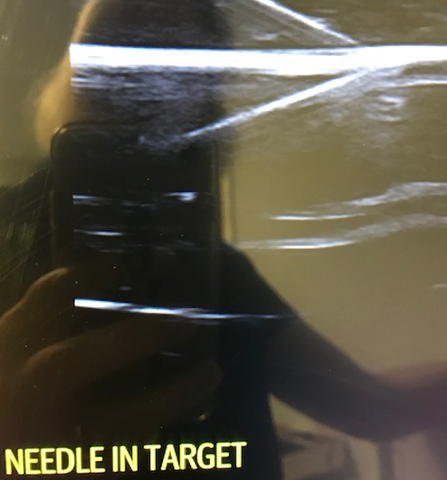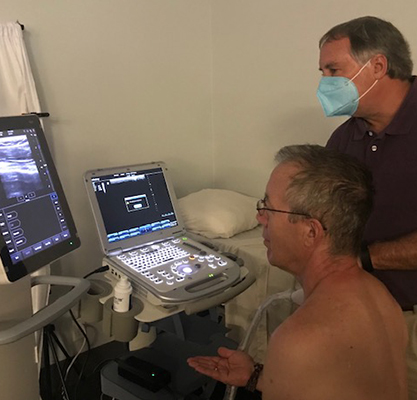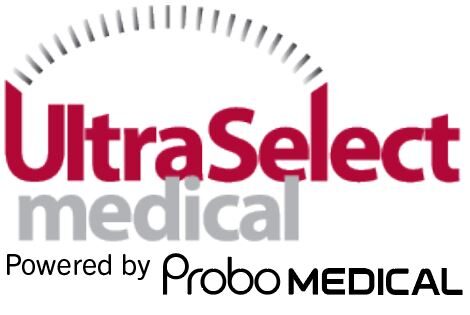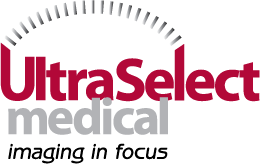Just in time for Halloween. While some people might think that ultrasound is nothing but smoke and mirrors or magic it is, in fact, hard science. We have to make good decisions about treatment based on some dotty images. The funny thing is that the above words actually have meaning in ultrasound. There had to be a sense of humor behind the coining of these terms.
The first word actually stands for Hospitalist Operated Compression UltraSound.
The term hospitalist came into being around 1996. They are doctors that work in a more general capacity and oversee the care of patients in a variety of areas of medicine. These doctors can be trained to use compression ultrasound in two major areas. There may be other areas that they use compression for but for purposes of this blog we will stick to the main two categories. Compression is used in this area for ruling out a DVT. This is an abbreviated exam using the dual screen with compression and noncompression images to see if the patient has a deep venous thrombosis. The second compression technique is used to close off the stalk of a pseudoaneurysm. This is not a popular technique and requires the doctor to hold compression on the site for a long period of time taking ultrasound images at certain time intervals. The use of compression ultrasound in both cases can be painful for the patients. All ultrasound machines can perform these two procedures provided that the correct transducer and a dual screen are used.
POCUS means Point Of Care UltraSound.
Point of Care in the broadly general sense is a bedside or place of incident ultrasound. These exams are meant to be quick and focused on one area. Protocols are meant to solve the immediate issue not to perform long and involved studies. Even ambulances are using POC units for suspected cardiac, lung and abdominal surveillance. Sometimes it is appropriate to say HOCUS POCUS because both apply. No pun intended. The complete ultrasounds are done on different machines and in the specialty department. The console systems are the best choice for the complete and extensive protocol studies. The Point of Care machines are placed on a cart and are much smaller so they can fit into tight quarters. POC machines are less expensive and have other features that allow for other types of connectivity. Examples of POC machines are Mindray M7, M8, TE5 and TE7, Sonosite PX, SII and EdgeII and GE LOGIQ e. There are other manufacturers that produce POC machines but these are the main examples.

FOCUS generally refers to the use of ultrasound in the therapeutic arena.
Many times it is called high intensity focused ultrasound. This ultrasound uses continuous wave and lower frequencies and it is directed at one target. The ultrasound we use has a frequency range of 1.5MHz to 22 MHz and is pulsed. Today these treatments are often done in the MRI suite using MRI guidance for transducer placement and can provide real time information about effectiveness. Focused ultrasound does not harm surrounding tissue. As a treatment the outcomes have been positive. It is performed on an outpatient basis, minimal discomfort and rapid recovery. Focused ultrasound is approved to treat neurological conditions, prostate, bone metastases and uterine fibroids. Ultra Select Medical does not sell this equipment but we may in the future.

You can see that ultrasound can be used in so many ways to diagnose many issues. The only type of ultrasound that was not addressed is that type done for physical therapy for healing of tissues. That will be addressed in a later blog. So when you think of Hocus, Pocus and Focus you will have us in mind. Happy Halloween.


